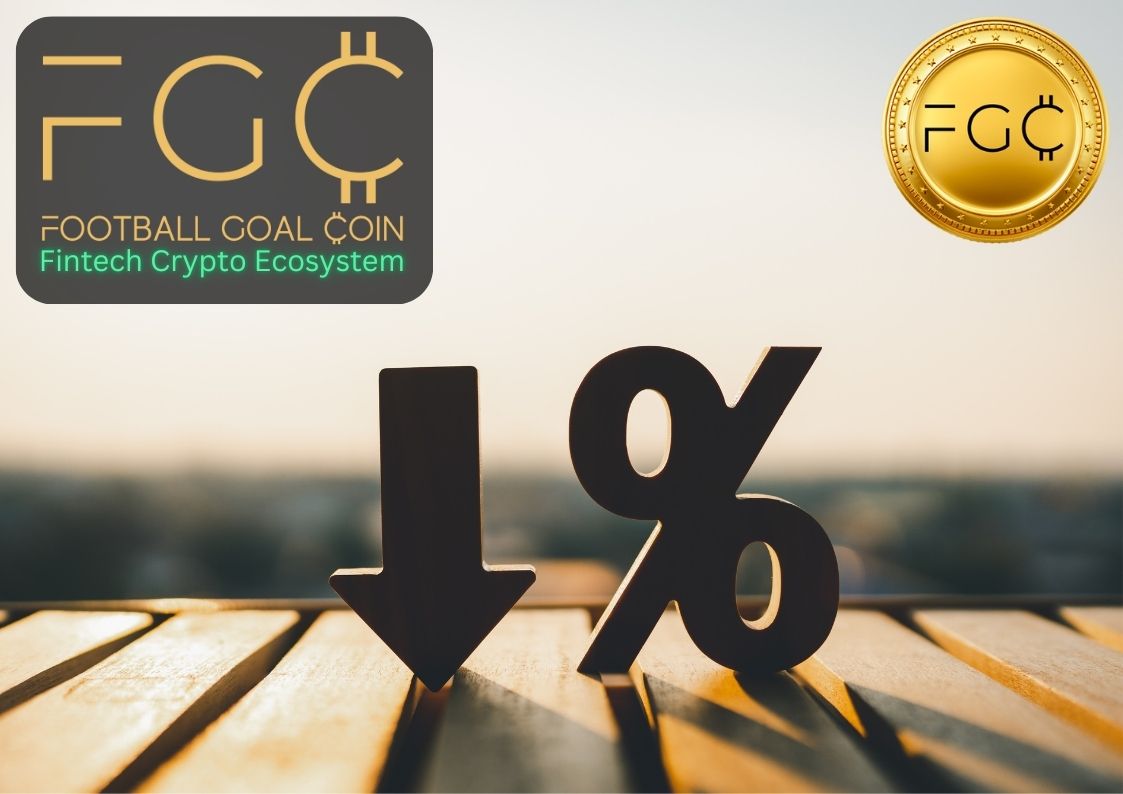Key Insights for Crypto Investors, Traders & Football Fan Coins
As the crypto fintech landscape evolves, the intersection of sports, blockchain, and cryptocurrency presents unique opportunities and challenges. This article aims to delve into critical research findings that impact crypto buyers, sellers, investors, and traders, specifically tailored for the Football Goal Coin community.
Understanding Market Dynamics
- Inverse Relationship Between Gold and Bitcoin: A critical observation for crypto enthusiasts is the negative correlation between gold futures and Bitcoin prices. When gold prices rise, Bitcoin prices tend to fall, suggesting that Bitcoin is often seen as a riskier investment compared to the traditional safe haven asset, gold.
- S&P 500 Influence: The S&P 500 index, a barometer of the U.S. stock market, positively impacts Bitcoin prices. This correlation implies that as the stock market performs well, Bitcoin’s value tends to increase, reflecting a broader investor confidence in financial markets.
- Fear Index Impact: Fear indexes, which measure market volatility and investor anxiety, generally have a negative effect on cryptocurrencies. During periods of high fear and uncertainty, investors tend to shy away from the high volatility associated with Bitcoin and other cryptocurrencies.
- Pro-Cyclicality of Bitcoin: Bitcoin is pro-cyclical, meaning its performance is closely tied to the overall economic cycle. Investor interest drives its value, and it tends to move in tandem with market portfolios, emphasising its role as a speculative investment.
- Google Trends: An increase in Google searches for Bitcoin correlates with a rise in its price. This trend underscores the importance of public interest and awareness in driving market movements.
- Risk and Volatility: Bitcoin exhibits higher risk, as measured by standard deviation, compared to the S&P 500. This characteristic attracts risk-seeking investors who are drawn to the potential for higher returns despite the greater volatility.
- Commodity Properties: Unlike traditional commodities, Bitcoin does not exhibit the same characteristics, further distinguishing it as a unique asset class.
- Investor Sentiment and FOMO: Investor sentiment, particularly driven by the fear of missing out (FOMO), plays a significant role in Bitcoin’s price fluctuations. Both rational and irrational sentiments influence market dynamics, often leading to heightened volatility.
- Impact of News: Good news has a more substantial impact on Bitcoin’s trading volatility compared to bad news. This asymmetry suggests that positive developments in the cryptocurrency space can lead to significant price spikes.
The Human Element: Behavior and Sentiment
- Panic During COVID-19: The COVID-19 pandemic introduced significant uncertainties, leading to panic-related behaviours in the markets, including cryptocurrencies.
- Emotion-Driven Market: The Bitcoin market is highly influenced by emotions and volatility transmissions, making it more susceptible to abrupt price changes based on investor sentiment.
- Influence of Macro-Financial Indicators: Bitcoin traders are affected by a range of factors, including macro-financial indicators and market sentiment, highlighting the complexity of the market.
- Sparse Influence of Indicators: While various indicators influence investors’ decisions, the impact is often sparse, indicating that market mood and macro-financial conditions only partially guide trading behaviours.
- Speculative Approaches: Bitcoin often prompts speculative trading behaviours, further contributing to its high volatility and unique market dynamics.
- Distinctive Trader Behaviour: Bitcoin traders exhibit behaviours that are significantly different from those in traditional markets. The arbitrary nature of their actions leads to heightened volatility in the Bitcoin exchange rate.
Societal and Psychological Factors
- Cynicism Toward Mainstream Media: Crypto consumers often exhibit cynicism toward mainstream news, shaping their purchasing decisions based on alternative information sources.
- Information Access and Social Media: There is a strong correlation between crypto buyer behaviour and the increased use of online platforms and social media, particularly among younger audiences.
- Distrust in Institutions: Many crypto buyers distrust official institutions and mainstream media, preferring unofficial sources of information.
- Attitudes Toward Work and Money: Crypto buyers often seek shortcuts and display unique attitudes toward work and money, favouring less conventional career paths.
- Employment Patterns: Many crypto buyers are not in traditional jobs, instead engaging in gig economy, freelance, or part-time work, driven by a desire to ‘get rich quick’.
- Minimal Effort for Maximum Gain: The motivation to make money with minimal effort is a common trait among crypto buyers, who perceive crypto investments as smart or shortcut methods.
- Influential Recommendations: Engagement with crypto assets is often prompted by influential recommendations from a few key sources.
- The Journey to Crypto Purchases: The typical path to purchasing crypto assets involves suggestions from acquaintances or persuasive online sources promising significant returns.
- Alternative Information Sources: Distrust in mainstream media and the perceived futuristic nature of crypto assets drive buyers to seek information from blogs, social media, and online influencers.
- The Next Big Thing: Many crypto buyers believe they are investing in the ‘next big thing,’ trusting in the inevitable rise in value due to the potential large-scale adoption of blockchain technology.
- Financial Outcomes: Crypto buyers have experienced both gains and losses, with many having sold some or all of their assets, underscoring the volatile nature of the market.
- Gambling-Like Experience: The crypto buying experience combines elements of risk similar to gambling, along with significant social media influence.
- Distinct Risk Factors: Crypto trading involves unique risks that differentiate it from activities like day trading and online sports gambling.
- Retail Investor Entry: Bitcoin price increases often correlate with greater entry by retail investors, particularly following price rises, as seen from 2015-2022 data.
- Demographic Appeal: Crypto is most appealing to young men, who generally have a higher risk tolerance compared to women and older individuals.
- Device-Based Demographics: Crypto buying is higher among Android users, who typically have lower incomes than iOS users.
Investment Behaviours and Trends
- Speculative Investment View: Investors largely view cryptocurrencies as speculative investments rather than practical means of payment.
- Behavioural Types in Crypto Systems: There are four distinct behavioural types among crypto investors: optimists, pessimists, positive traders, and negative traders.
- Crypto Holdings: Two-thirds of crypto users hold Bitcoin, with Ethereum, Litecoin, XRP/Ripple, and Bitcoin Cash also being popular.
- Knowledge and Willingness: Bitcoin owners are more likely to correctly define cryptocurrency and show a greater willingness to buy in the future compared to owners of non-Bitcoin cryptocurrencies.
- Impact of Advertising: Advertising has a limited influence on Bitcoin owners compared to non-Bitcoin cryptocurrency owners, suggesting a more informed and deliberate investment approach among the former.
- Holding Values: In 2020, the highest reported holding was £30,000, which rose to £7m in 2022, indicating significant wealth concentration among top investors. The median holding increased from £260 to £300.
- Use of Disposable Income: Most crypto users (78%) use their disposable income for purchases, while 14% rely on borrowing.
- Usage Beyond Investment: A significant portion (27%) of crypto users has used cryptocurrencies to purchase goods or services, showing its growing utility beyond investment purposes.
- Future Investment Interest: Despite market fluctuations, half of crypto users express interest in buying more in the future.
- Stable Coins: There is limited appetite for stable coins, although interest may grow as market conditions evolve.
- Online Marketplaces: Consumers show more openness to using cryptocurrencies on online marketplaces like Amazon and eBay than on social media platforms.
- Investment and Store of Value: Cryptocurrencies are primarily seen as investment vehicles or stores of value, though the interest in crypto-linked cards suggests a potential shift toward everyday transactions.
- Emerging Markets: Consumers in emerging markets are more likely to own and use cryptocurrencies, driven by factors like local fiat inflation and currency devaluation.
- Developed Markets: In developed markets, the stability of national economies makes consumers less influenced by the benefits of cryptocurrency.
For the Football Goal Coin community, understanding these multifaceted dynamics is crucial for making informed decisions in the volatile world of cryptocurrency. As our FGC Fintech platform and ecosystem grows, staying abreast of these trends and behaviours will be key to navigating the future of digital assets and blockchain technology. We want you all to suceed!











